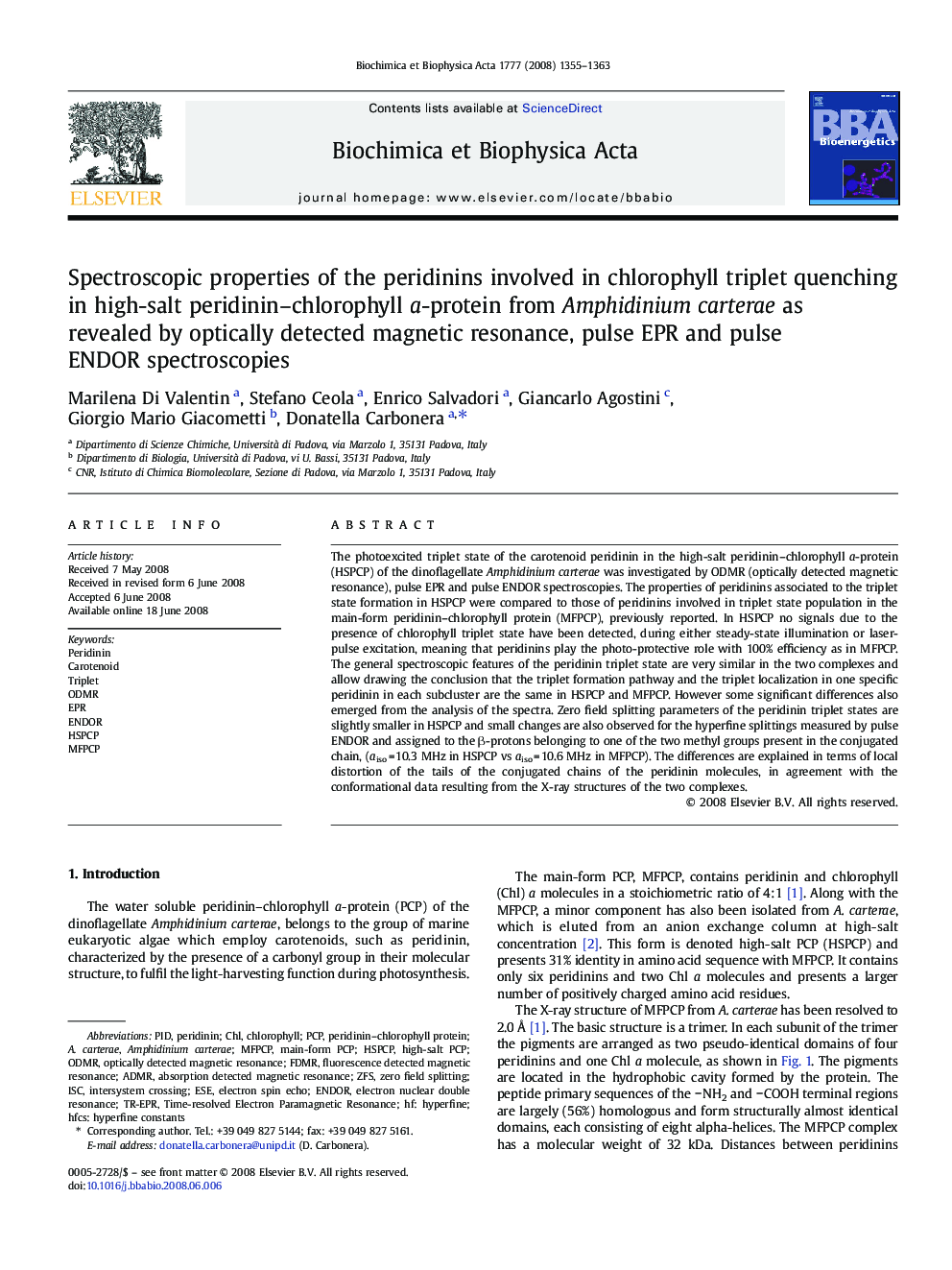| کد مقاله | کد نشریه | سال انتشار | مقاله انگلیسی | نسخه تمام متن |
|---|---|---|---|---|
| 10796048 | 1052655 | 2008 | 9 صفحه PDF | دانلود رایگان |
عنوان انگلیسی مقاله ISI
Spectroscopic properties of the peridinins involved in chlorophyll triplet quenching in high-salt peridinin-chlorophyll a-protein from Amphidinium carterae as revealed by optically detected magnetic resonance, pulse EPR and pulse ENDOR spectroscopies
دانلود مقاله + سفارش ترجمه
دانلود مقاله ISI انگلیسی
رایگان برای ایرانیان
کلمات کلیدی
ENDORZFS, zero field splittingISC, intersystem crossingODMR, optically detected magnetic resonanceFDMR, fluorescence detected magnetic resonanceADMR, absorption detected magnetic resonanceODMRESE, electron spin echoENDOR, electron nuclear double resonance - ENDOR، رزونانس دو هسته ای الکترونEPR - تشدید پارامغناطیس الکترونChl, chlorophyll - سبزینه یا کلروفیلTriplet - سه قلوPeridinin - پریدنینCarotenoid - کاروتنوئید
موضوعات مرتبط
علوم زیستی و بیوفناوری
علوم کشاورزی و بیولوژیک
دانش گیاه شناسی
پیش نمایش صفحه اول مقاله

چکیده انگلیسی
The photoexcited triplet state of the carotenoid peridinin in the high-salt peridinin-chlorophyll a-protein (HSPCP) of the dinoflagellate Amphidinium carterae was investigated by ODMR (optically detected magnetic resonance), pulse EPR and pulse ENDOR spectroscopies. The properties of peridinins associated to the triplet state formation in HSPCP were compared to those of peridinins involved in triplet state population in the main-form peridinin-chlorophyll protein (MFPCP), previously reported. In HSPCP no signals due to the presence of chlorophyll triplet state have been detected, during either steady-state illumination or laser-pulse excitation, meaning that peridinins play the photo-protective role with 100% efficiency as in MFPCP. The general spectroscopic features of the peridinin triplet state are very similar in the two complexes and allow drawing the conclusion that the triplet formation pathway and the triplet localization in one specific peridinin in each subcluster are the same in HSPCP and MFPCP. However some significant differences also emerged from the analysis of the spectra. Zero field splitting parameters of the peridinin triplet states are slightly smaller in HSPCP and small changes are also observed for the hyperfine splittings measured by pulse ENDOR and assigned to the β-protons belonging to one of the two methyl groups present in the conjugated chain, (aiso = 10.3 MHz in HSPCP vs aiso = 10.6 MHz in MFPCP). The differences are explained in terms of local distortion of the tails of the conjugated chains of the peridinin molecules, in agreement with the conformational data resulting from the X-ray structures of the two complexes.
ناشر
Database: Elsevier - ScienceDirect (ساینس دایرکت)
Journal: Biochimica et Biophysica Acta (BBA) - Bioenergetics - Volume 1777, Issue 10, October 2008, Pages 1355-1363
Journal: Biochimica et Biophysica Acta (BBA) - Bioenergetics - Volume 1777, Issue 10, October 2008, Pages 1355-1363
نویسندگان
Marilena Di Valentin, Stefano Ceola, Enrico Salvadori, Giancarlo Agostini, Giorgio Mario Giacometti, Donatella Carbonera,